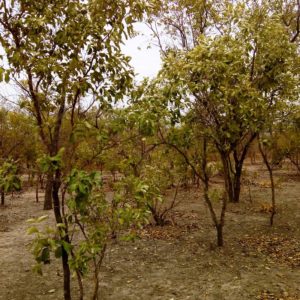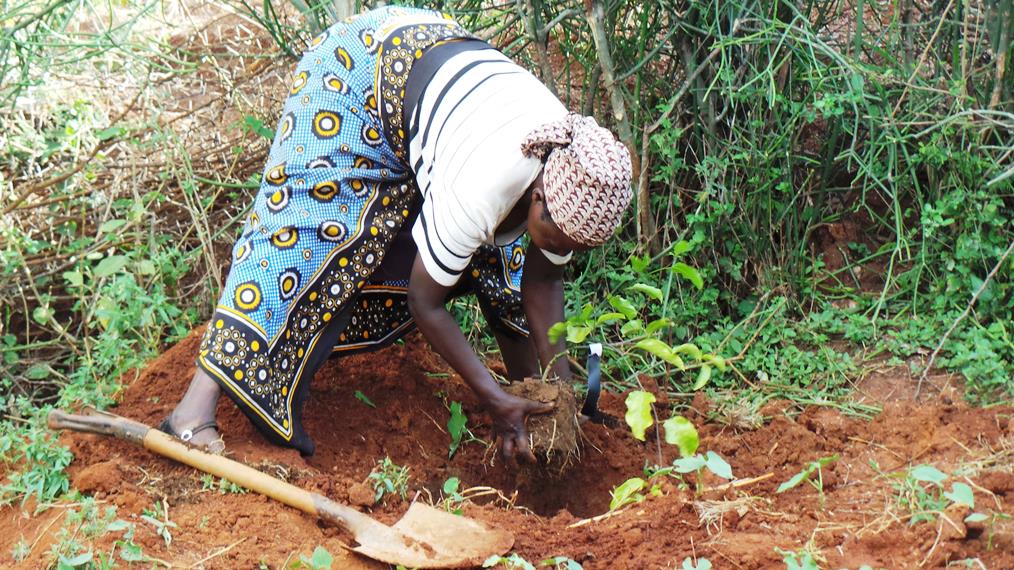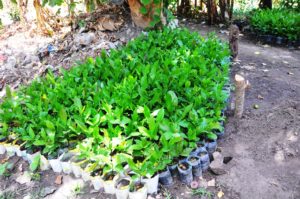Every year, millions of dollars are spent on attempting to restore landscapes to health by planting trees. Success is very scanty. Researchers explain why and how rethinking the words will help achieve success.
Over the last five decades there are few success stories of land-restoration efforts and even those few did not meet all the objectives for which the resources were spent.
Typically, the tree seedlings in mass-planting schemes have a low survival rate, making the return on investment low and a mockery of well-meaning attempts to restore our planet’s health.
Why is it that often very large, well-resourced and well-publicized schemes aren’t able to achieve their goals, for the benefit of all?
A study by researchers at World Agroforestry (ICRAF) argues that often tree “planting” is stated as the ultimate objective: “We will plant a billion trees!” Rather, the objective should instead be “growing” trees.
The success of restoration projects is often measured by the number of trees planted or the size of the area, not the number of trees grown, or the area of land covered with grown trees.
“Governments, development agencies and companies exercising corporate social responsibility need to shift from talking about “planting” to planning for “growing” trees if they really want to achieve their goals,” said Lalisa Duguma, lead author of the study and a sustainable landscapes and integrated climate actions scientist with ICRAF.“Most restoration projects operate on short timeframes of one-to-three years but many tree species — particularly a lot of native tree species — need more time to grow sufficiently mature to survive extremes of weather and attack from fire, livestock, pests and diseases. During their infancy they need to be cared for,” she added.
The researchers found that the growing of trees should start with an emphasis on the right trees for the right place and the right purpose. However, in restoration projects this is usually very weak.
“Species should be selected that match not only the biophysical but also the socioeconomic conditions,” said Judith Nzyoka, a co-author, water engineer and expert on landscape restoration with ICRAF. “Farmers and communities in restoration areas are much more likely to care for the trees if they are useful to them.”
The research team found that, for example, corporate social responsibility schemes have usually been focussed on identifying open, often barren, places and then planting seedlings. Though such activities usually happen in close collaboration with government, there is often a lack of consistent care for the seedlings to ensure their survival. Rather, there are usually no plans beyond planting; there is no investment in after-planting care. The assumption is probably that trees grow naturally and nothing more needs to be done.
However, “trees are not organisms that can grow anywhere,” said Peter Minang, principle science advisor with ICRAF. “They need proper soil, watering during dry seasons, pests and diseases need to be controlled, and the trees need protection against fire and damage by livestock.”
And in these changing times, the climate in which trees grow should be suitable, that is, all species must be matched to proper sites and predictions of climate changes taken seriously given we are in a climate emergency. With increased variability of critical factors such as rainfall and temperature, it is crucial to do proper assessments of whether the changed—and predicted changed—conditions will be suitable.
This is particularly the case for species like coffee and fruits as the altitude ranges and other conditions in which they have usually been grown shift under the influence of long-term climate change and short-term climate variability.

Assisted natural regenerated forest is protected by a community in the Lower River Region of The Gambia. Photo: World Agroforestry.
Ultimately, for restoration to be effective, proper governance with incentive mechanisms that represent the needs of the people who live in the landscape should be in place. If this does not happen, restoration will not be successful because the communities who are expected to take responsibility for the long-term management of the trees will not have any incentive to do so.
“Numerous restoration efforts fail to create values that communities perceive as necessary,” said Duguma. “Addressing this gap requires a thorough engagement process wherein the needs and interests of the communities are embraced so that the restoration reflects their needs at least to a significant degree if not wholly.”
The shift from “planting” to “growing” needs to happen fast if we are to meet our climate goals. Rethinking the terms and all their implications is long overdue.
The working paper was produced using lessons, data and information from the project, Large-scale Ecosystem-based Adaptation in The Gambia River Basin: Developing a Climate-resilient, Natural-resource-based Economy’. The project is funded by the Green Climate Fund and implemented by the Government of The Gambia with support from the United Nations Environment Programme. The working paper also relied on details from various activities of the CGIAR Research Program on Forests, Trees and Agroforestry.
World Agroforestry (ICRAF) is a center of scientific and development excellence that harnesses the benefits of trees for people and the environment. Knowledge produced by ICRAF enables governments, development agencies and farmers to utilize the power of trees to make farming and livelihoods more environmentally, socially and economically sustainable at multiple scales. ICRAF is one of the 15 members of the CGIAR, a global research partnership for a food-secure future.
Featured photo (courtesy of World Agroforestry) shows a farmer planting trees on her farm in Kenya.
Download the working paper (PDF).
This article by Rob Finlayson originally appeared on the World Agroforestry website.
Reprinted by permission.


